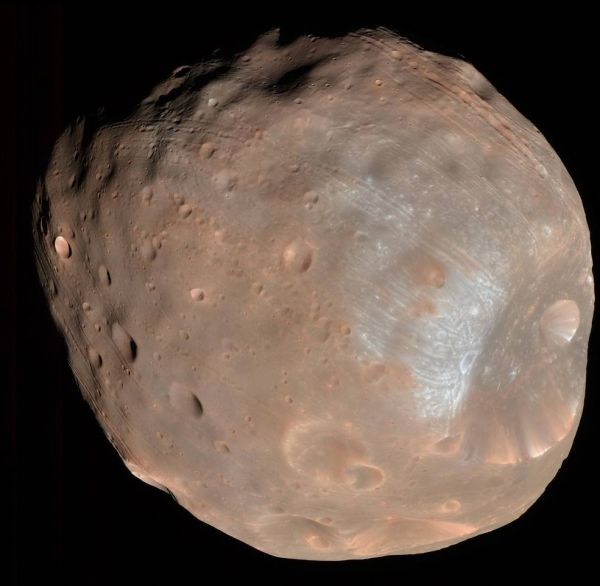The Martian moon Phobos orbits through a stream of charged atoms and molecules that flow off the Red Planet’s atmosphere, new research shows.
Many of these charged particles, or ions, of oxygen, carbon, nitrogen, and argon, have been escaping Mars for billions of years as the planet has been shedding its atmosphere. Some ions, scientists predict, have been smashing into the surface of Phobos and could be preserved in its uppermost layer, according to a paper published on Feb. 1 in the journal Nature Geoscience.
This means that if soil from Phobos were analyzed in labs on Earth, it could reveal key information about the evolution of the Martian atmosphere, researchers say. Mars once had an atmosphere thick enough to support liquid water on its surface; today, it’s less than 1% as dense as Earth’s.
Read more at: NASA Goddard Space Flight Center
An image of Phobos from March 23, 2008, taken by the High Resolution Imaging Science Experiment camera on NASA's Mars Reconnaissance Orbiter. (Photo Credit: NASA/JPL-Caltech/University of Arizona)


